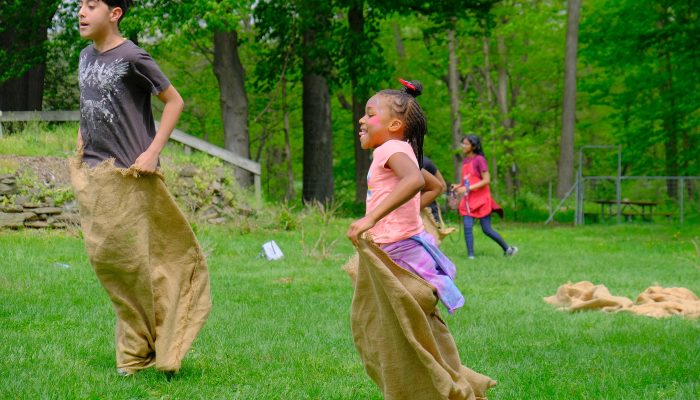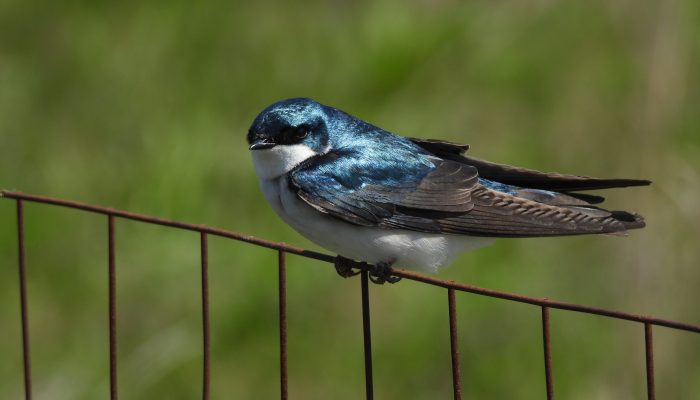By Tony Croasdale, Environmental Educator
Cobbs Creek Community Environmental Center
Parks & Rec helps maintain 10,000 acres of parkland. Our staff and volunteers work to ensure that our forests, meadows, and wetlands stay healthy. A big part of our work is protecting native plants and removing invasive ones. What’s the big deal? Why are native plants so important? What makes something invasive? And how can you help?
Native vs. invasive
Philadelphia was once home to a very diverse array of native plants. These native species play an important role in the environment. Native plants feed insects, which in turn feed birds and other animals. But our native plants have lost space to plants from other places. Europe and northern Asia have similar climates to ours. That means plants from there can grow here. People brought plants from these areas that they thought were attractive or useful. Some of these plants were popular because they had few natural pests. That is exactly the problem.
Our insects need native plants
Our native insects did not evolve to be able to eat these plants. Some plants have toxins in their leaves and stems to prevent insects from eating them. If an insect did not coevolve with a plant, it most likely cannot eat it.
Without anything to eat these plants, they can grow fast. They take over space where native plants can grow. That means our insects lose their homes and their food source. This is what it means to be ‘invasive.’ This is bad news for birds and other animals that feed on insects.
Early birds need the worms
Insects are an important source of protein for nestlings (baby birds). A diet rich in insects helps birds grow quickly. Even birds like cardinals and sparrows who eat mostly seeds also eat insects. If the insect population declines, so does the number of birds.

Save bugs, save birds: plant natives
Dr. Doug Tallamy, Professor of Entomology at the University of Delaware, has studied this issue. His research shows that the insect population declines as native plants decline. Here’s how it works:
- More invasives in our landscape mean fewer native plants.
- Fewer native plants mean fewer insects.
- Fewer insects mean fewer birds.
Tallamy has written two books to encourage people to use native plants in their yard. The goal is to increase insect and bird populations.
I conducted similar research in Philadelphia as part of my college thesis. I worked with Philadelphia High School students from “Wild West Philly.” This Philadelphia Water Department program is now known as “Watershed Stewards.” The students and I looked at native and invasive shrubs. We compared how many invertebrates the different plants hosted. Invertebrates are animals without a backbone or bony skeleton. This includes insects, spiders, and worms. Our results echoed Dr. Tallamy’s research. Native shrubs hosted more invertebrates compared with invasive species.
What we’re doing to help
Parks & Rec is working to increase native plants in the city’s collective back yard. Over the past decade our staff, volunteers, and partners have:
- Removed invasives and created a new urban forest near the Horticulture Center.
- Hosted regular tree plantings in our parks.
- Planted native plants around our environmental centers.
- Restored the Wissahickon—one tree at a time.
- Removed invasive and non-native species.
- Harvested live stakes at Greenland Nursery to protect our streams.
- Created the Concourse Lake Native Plant Park.
What you can do
Our environmental centers host programs about native plants. We also lead walks to see the birds that depend on the insects that eat native plants. Although our events and festivals are canceled through February of 2021, we are presenting programs online. View our Parks & Rec @ Home virtual nature programs.
Or check out these local resources:
- Hear Dr. Doug Tallamy discuss his book “Nature’s Best Hope.”
- Watch Tony Croasdale’s thesis presentation.
- Check out this list of native plant resources compiled by our partner, TTF Watershed Partnership.
- Learn how to landscape with plants native to Pennsylvania.
- Explore the National Audubon Society’s native plants database to learn what plants attract birds. You should also check out their bird-friendly plant FAQs.
- Read this “Simple Road Map to Provide Essential Habitat for Breeding Birds.”




